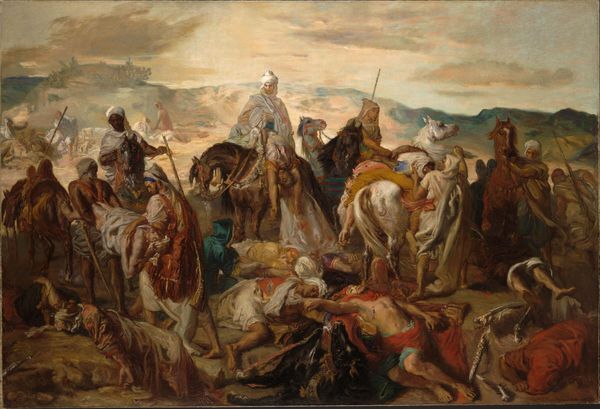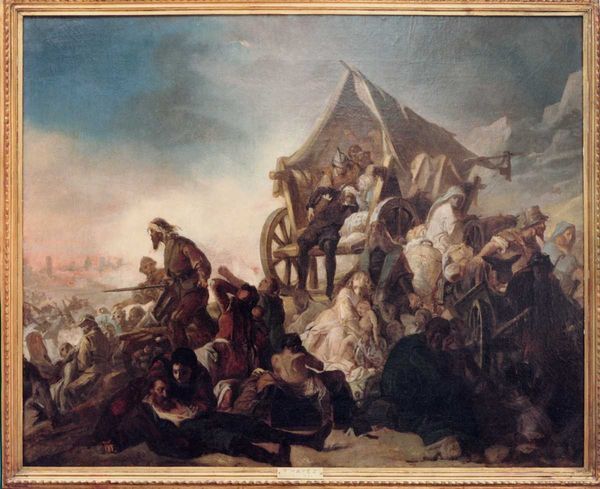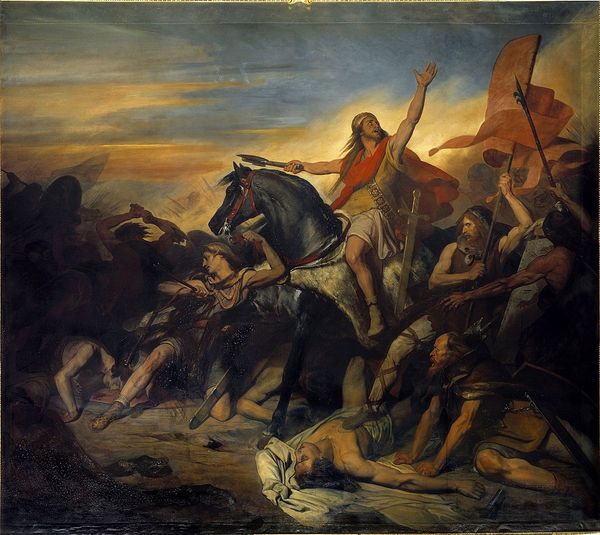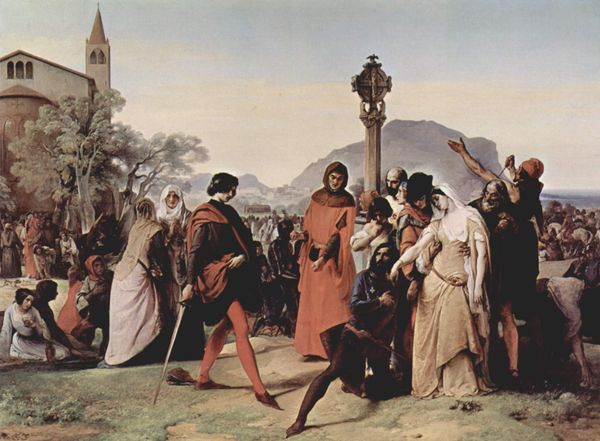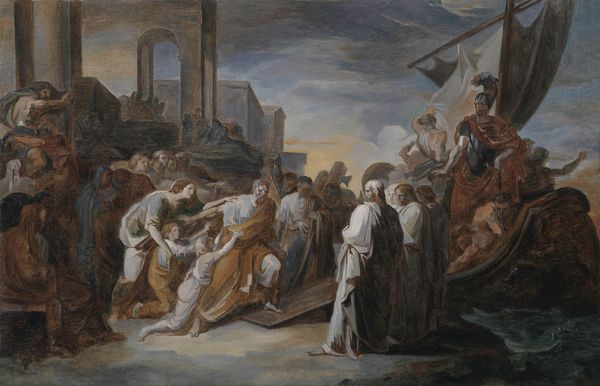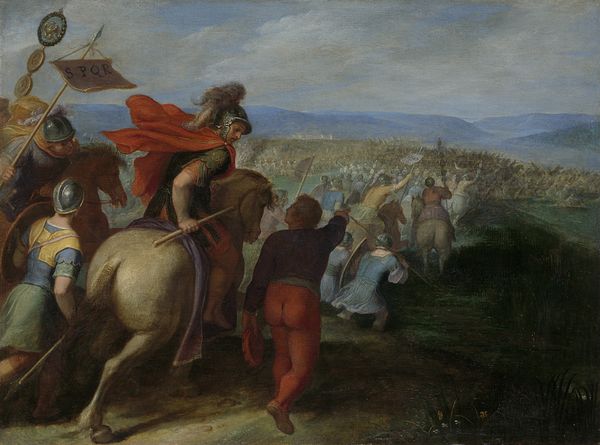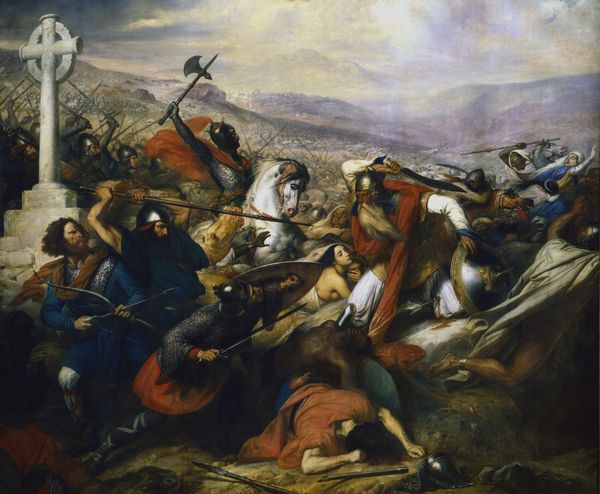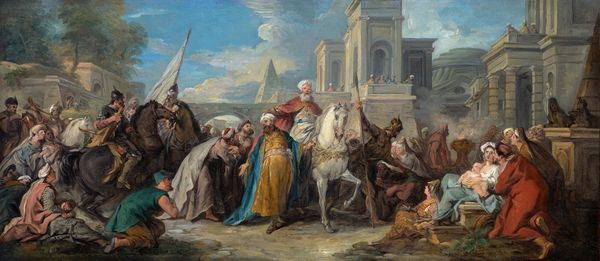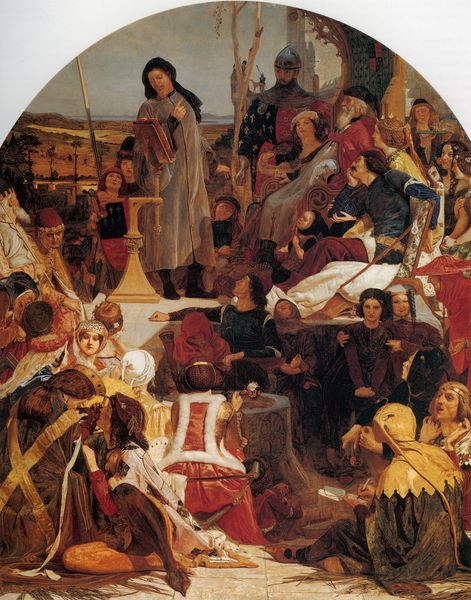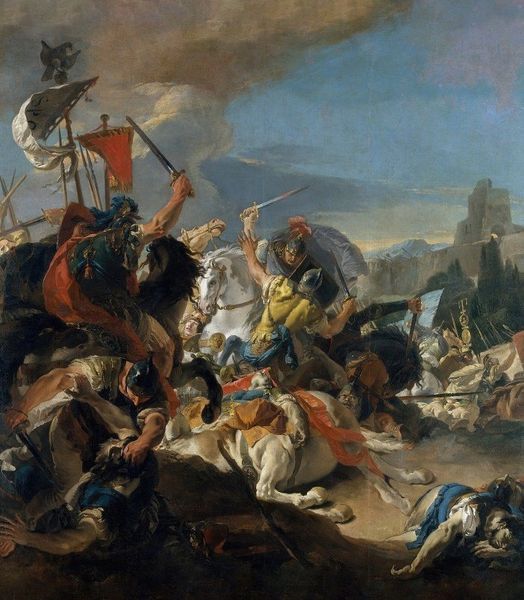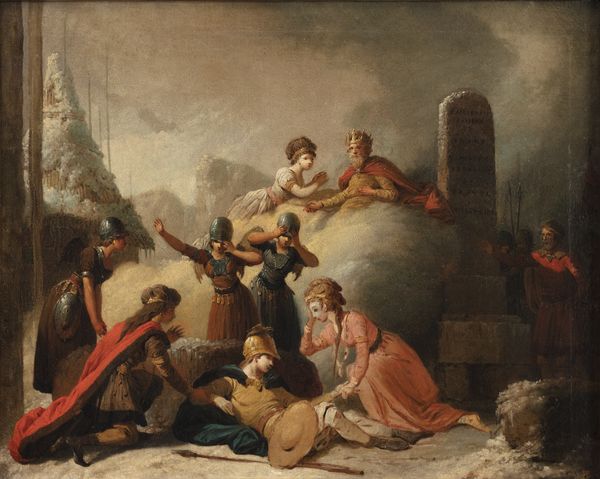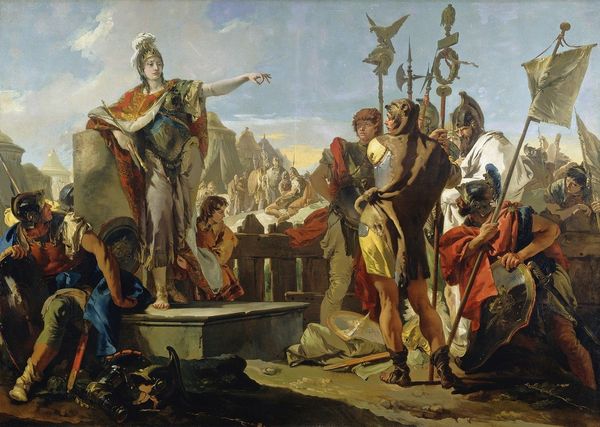
#
fantasy art
#
possibly oil pastel
#
oil painting
#
acrylic on canvas
#
underpainting
#
surrealism
#
painting painterly
#
abstract character
#
surrealist
#
digital portrait
Copyright: Public domain
Editor: So this is Ary Scheffer's "Charlemagne à Paderborn" from 1837. It's grand! All these figures, the landscape behind them... it feels very staged and formal. What symbolic meanings jump out at you? Curator: Notice how Charlemagne is positioned at the apex of a pyramid formed by the figures. Consider his raised hand, a classic gesture of authority and benediction. What do you think it means? Editor: Almost like he's a religious figure as much as a ruler? I guess it's that idea of divine right. Curator: Precisely. Think of the banners, prominently displaying religious symbols. Scheffer isn't just painting a historical event; he's crafting a narrative of divinely ordained rule, layering in powerful imagery that speaks to legitimacy and enduring power. Look at the reactions of the figures in the foreground - what are they emoting? Editor: There is deference, supplication, but I notice a few with upturned faces that signal hope? Maybe even reverence for the future? Curator: Exactly. And the spears fading into the distance imply an army, while he has both the clergy and the common folk looking to him for guidance and authority. All these cultural markers are so important in how the viewer sees the narrative! Editor: It is clever how the symbolic language carries so much weight. Thanks. Curator: Indeed. It highlights how historical events are framed through symbolic imagery to reinforce power structures. There's always more beneath the surface than it initially seems.
Comments
No comments
Be the first to comment and join the conversation on the ultimate creative platform.
